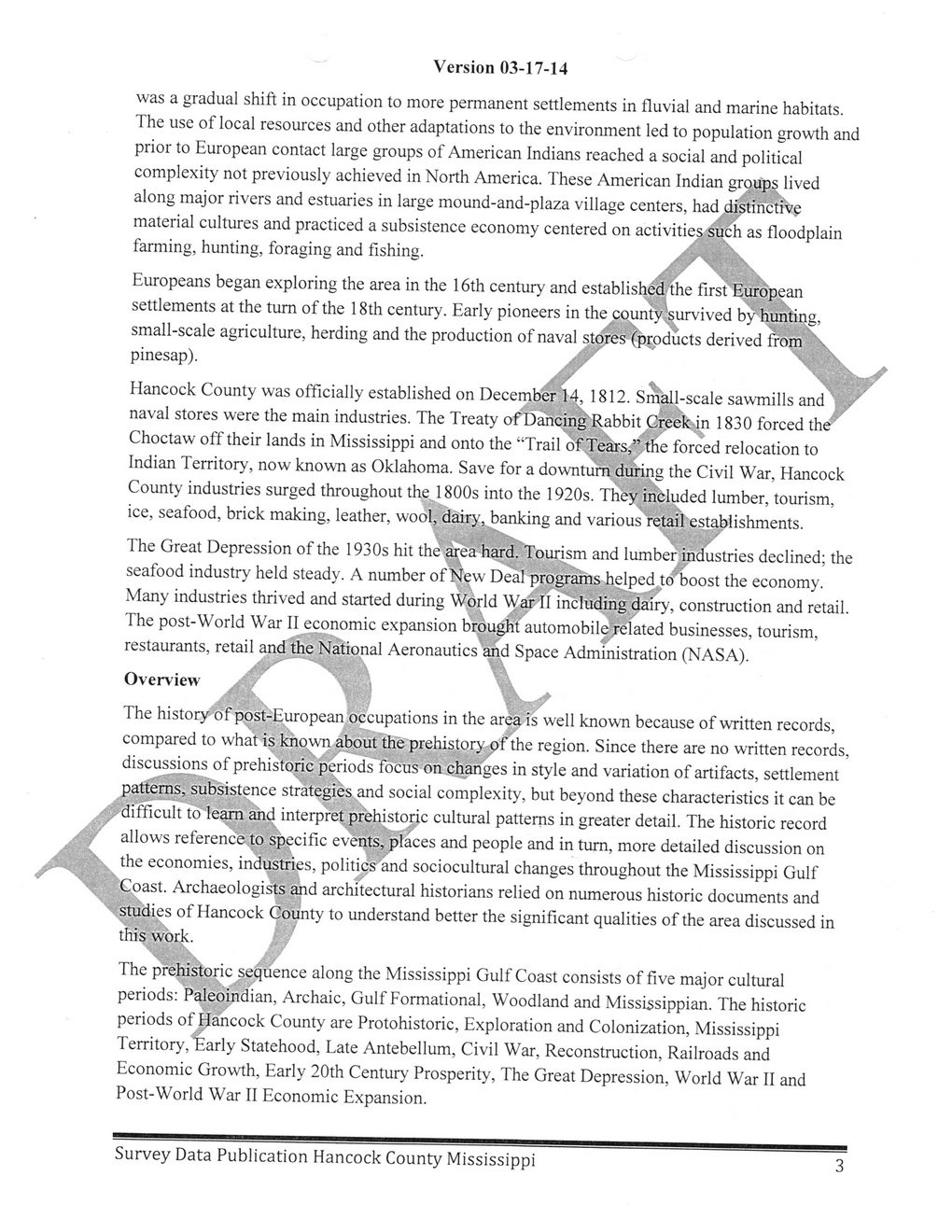This text was obtained via automated optical character recognition.
It has not been edited and may therefore contain several errors.
Version 03-17-14 was a gradual shift in occupation to more permanent settlements in fluvial and marine habitats. The use of local resources and other adaptations to the environment led to population growth and prior to European contact large groups of American Indians reached a social and political complexity not previously achieved in North America. These American Indian groups lived along major rivers and estuaries in large mound-and-plaza village centers, had,distinctive material cultures and practiced a subsistence economy centered on activities stich as floodplain farming, hunting, foraging and fishing. y '/v \ / *■_ \ Europeans began exploring the area in the 16th century and established 'the first'European settlements at the turn of the 18th century. Early pioneers in the county ^survived byhunting, small-scale agriculture, herding and the production of naval stores (products derived from \ pinesap). • v' \ Hancock County was officially established on December 14, 1812. Small-scale sawmills and ‘ naval stores were the main industries. The Treaty of Dancing" Rabbit Creek in 1830 forced the' Choctaw off their lands in Mississippi and onto the “Trail of Tears/’ the forced relocation to Indian Territory, now known as Oklahoma. Save for a downturn during the Civil War, Hancock County industries surged throughout the 1800s into the 1920s. They included lumber, tourism, ice, seafood, brick making, leather, wool, dairy, banking and various retail establishments. The Great Depression of the 1930s hit the area hard. Tourism and lumber industries declined; the seafood industry held steady. A number of New Deal programs helped to boost the economy. Many industries thrived and started during World War II including dairy, construction and retail. The post-World War II economic expansion brought automobile related businesses, tourism, restaurants, retail and the National Aeronautics and Space Administration (NASA). Overview // The history of post-£uropean occupations in the area is well known because of written records, compared to what is known about the prehistory of the region. Since there are no written records, discussions of prehistoric periods focus on changes in style and variation of artifacts, settlement patterns, subsistence strategies and social complexity, but beyond these characteristics it can be difficult to' learn and interpret prehistoric cultural patterns in greater detail. The historic record allows reference to specific events, places and people and in turn, more detailed discussion on the economies, industries, politics and sociocultural changes throughout the Mississippi Gulf Coast. Archaeologists and architectural historians relied on numerous historic documents and studies of Hancock Gounty to understand better the significant qualities of the area discussed in this work. The prehistoric sequence along the Mississippi Gulf Coast consists of five major cultural periods: Paleoindian, Archaic, Gulf Formational, Woodland and Mississippian. The historic periods of Hancock County are Protohistoric, Exploration and Colonization, Mississippi Territory, Early Statehood, Late Antebellum, Civil War, Reconstruction, Railroads and Economic Growth, Early 20th Century Prosperity, The Great Depression, World War II and Post-World War II Economic Expansion. Survey Data Publication Hancock County Mississippi

Hancock County History and Archeology Survey-Publication-Data-2014-(05)